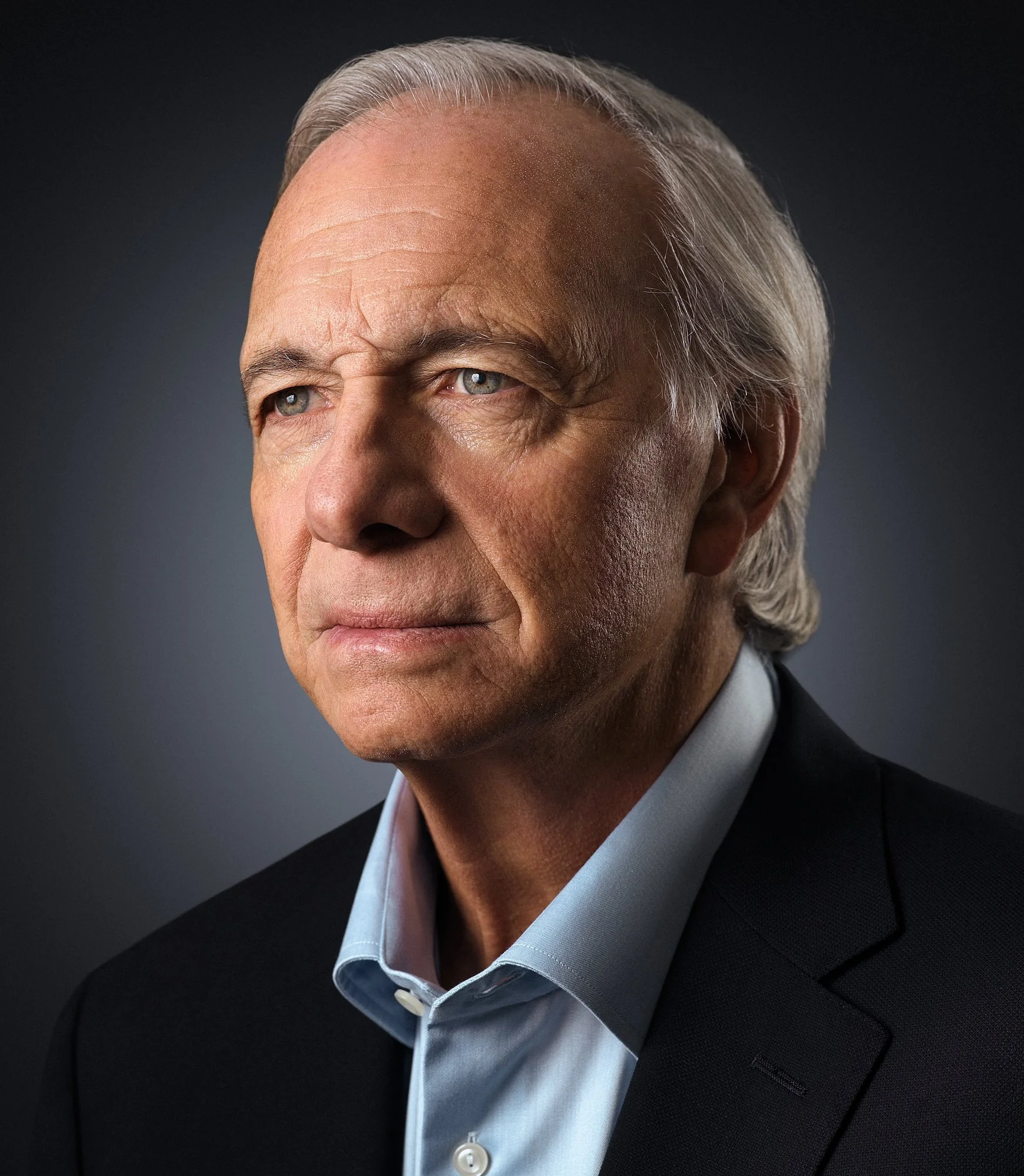New York, 2022 | Portrait by Rory Lewis
Ray Dalio Portrait Sitting (Rory Lewis Photographer 2022)
In this portrait of Ray Dalio, photographed in New York in 2022, I set out to capture one of the most defining transitions in modern finance — the moment a master of markets chose to rethink his own long-held beliefs.
Dalio, the billionaire investor, philanthropist, and founder of Bridgewater Associates, has for decades shaped the language and logic of global investing. Like Adam Smith before him — the 18th-century Scottish economist whose Wealth of Nations defined the moral and structural foundation of capitalism — Dalio views economics not merely as numbers and trends, but as a reflection of human nature itself.
That philosophical kinship guided this portrait. Its Caravaggio-inspired chiaroscuro, classical pose, and sculptural tonality echo the engraved likenesses of Adam Smith: deliberate, reflective, and rooted in moral gravity. Yet the lighting and tone are unmistakably contemporary — the subdued green-gold palette reminiscent of the color of money — symbolizing wealth, wisdom, and introspection.
In October 2022, at a pivotal moment in his career, Ray Dalio stepped down as Co-Chief Investment Officer of Bridgewater Associates. On that very day, he took to Twitter (now X) to make a statement that reverberated across global markets. Quoting John Maynard Keynes, who once said, “When the facts change, I change my mind. What do you do, sir?”, Dalio wrote:
“Along these lines, the facts have changed and I’ve changed my mind about cash as an asset: I no longer think cash is trash. At existing interest rates and with the Fed shrinking the balance sheet, it is now about neutral—neither a very good or very bad deal. In other words, the short-term interest rate is now about right.” — Ray Dalio, October 2022

